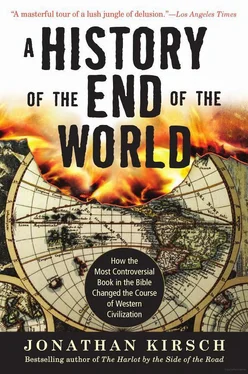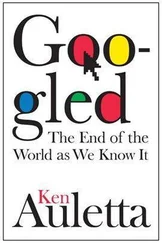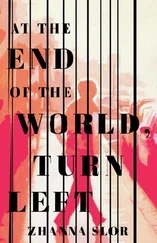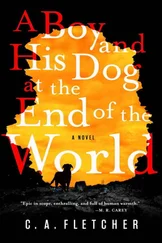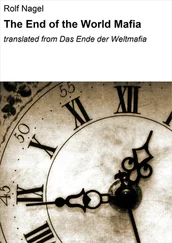“Suddenly, in the midst of the brilliant civilization of the twentieth century, all the worst attributes of humanity have come to the front; all the most evil passions have been unleashed; all the evil spirits some thought were exorcized centuries ago have returned sevenfold, more loathsome and diabolical than of old,” wrote Arthur Maxwell, editor of the prophetic journal of the Seventh-day Adventists, in History’s Crowded Climax. “All the strange and terrible developments of these tremendous times…are indeed but a further indication that we are in the midst of the crowning crisis of the ages.” 121
Tragically, some of the same Christian fundamentalists who saw the creation of a Jewish state in Palestine as a precondition to the Second Coming were also capable of extraordinary callousness toward the Jewish victims of the Holocaust. “God may be permitting Satan to use a Hitler, Goebels [ sic ] or a Stalin to chasten His People and thus make them discontent in their wealth and prosperity,” argued one Christian tract when the machinery of the Holocaust was already in full operation. “The Jew is gradually being forced to go back to his promised land. He is not wanted in very many lands.” 122
Then, too, the very prospect of victory over the Axis by force of arms was something of a disappointment to the apocalyptic doomsayers precisely because the defeat of a mortal enemy, no matter how barbarous and cruel, was not equivalent to the defeat of Satan. “Uncle Sam will be no match for the Antichrist,” insisted the Christian Digest in 1942, alluding to the Armageddon yet to come and delighting in the knowledge that only the Lamb of God will be able to vanquish the ultimate villain. But neither Hitler nor Mussolini was the Beast: “The worst is yet to appear.” 123
Ironically, the apocalyptic idea can be seen on both sides of the struggle between democracy and totalitarianism in World War II. The Nazis, like the first readers of Daniel and Revelation, “believed that they had arrived at the crucial moment in human history,” explains Damian Thompson. “A new heaven and a new earth was within the grasp of the Elect—so long as they did not yield to the forces of the enemy.” The Nazi leaders of Germany may have disdained the kind and gentle Jesus of the Gospels—“National Socialism and Christianity are irreconcilable,” declared Martin Bormann in 1941 124—but Hitler plainly understood the terrible power of the millennial ideal: “There can be little doubt that the thousand-year reign of the saints lies behind the vision of a thousand-year Reich,” observes Thompson. 125
Nazi Germany provides a case study of the terrible things that can happen when apocalyptic passion and true belief are fused in the hearts and minds of otherwise civilized human beings. “It is a grotesque irony that Nazism should have unconsciously adopted the structure of belief partly developed, though not necessarily invented, by the Jews,” Thompson points out, referring to the fact that the apocalyptic tradition in Judaism begins in the book of Daniel. “But in terms of blood or sheer malignant hatred of the enemy, Daniel and the earliest apocalypses do not begin to rival the Nazis’ apocalyptic struggle; for that we must got to the book of the Revelation.” For the Nazis, as for the author of Revelation, the adversary was imagined to be “pure evil…in human form” and “so resilient that he can be defeated only in a cosmic war,” a conviction on which they relied in carrying out the crimes of the Holocaust. 126
Indeed, the “millenarian roots of Nazism” can be discerned in Norman Cohn’s masterful study of apocalyptic violence in the Middle Ages, The Pursuit of the Millennium. Cohn looked all the way back to such apocalyptic excesses as the mass murder of Jews during the First Crusade—but he was provoked into undertaking his work when, as an intelligence officer in World War II, he was called upon to interrogate captured SS men and thereby found himself face-to-face with “a mind-set ‘in which one can actually feel it is a good thing to shove small children into ovens or to send millions of people to starve and freeze to death.’” 127
Still, the Second World War produced something wholly new in the apocalyptic tradition. The authors of Daniel and Revelation were capable of imagining the end of the world, but human experience seemed to confirm that the world was not so easily destroyed. After all, the extermination of humankind and the destruction of human civilization had proved to be far beyond the will or the power of the barbarians, the armies of Islam, the Spanish armada, or the Napoleonic battalions, all of which were seen as the work of Satan. Over and over again, the world had persistently refused to end.
At 5:30 AM on July 16, 1945, the detonation of the world’s first atomic bomb in the desert of New Mexico gave proof that the power to destroy the world actually exists. The successful test-firing of a nuclear weapon, code-named “Trinity,” produced a curious phenomenon: the silica in the desert sand was fused into solid glass for a distance of eight hundred yards in every direction from ground zero. For the reader of Revelation, the spectacle calls to mind one of the visions of the throne of God as it is described in the ancient text.
From the throne issue flashes of lightning, and voices and peals of thunder, and before the throne burn seven torches of fire, which are the seven spirits of God; and before the throne there is, as it were, a sea of glass like unto crystal. 128
Indeed, the sight of the first thermonuclear explosion in the history of the world inspired an apocalyptic vision in J. Robert Oppenheimer, the so-called Father of the Atomic Bomb, but he borrowed from Hindu tradition to describe what he glimpsed in the smoke and fire: “I am become Death,” Oppenheimer later mused, quoting the words of Vishnu, “the destroyer of worlds.” 129
To discern any deity in the iconic mushroom cloud at Trinity, however, misstates the significance of what Oppenheimer was beholding at that moment—a scientific experiment that demonstrated the power of humankind to destroy itself. With the detonation of the first atomic bomb, the Apocalypse took a quantum leap into a new and previously unimaginable realm, and humankind was suddenly forced to confront the awful knowledge that the end of the world does not require God at all.
7. The Godless Apocalypse
Things fall apart; the centre cannot hold
Mere anarchy is loosed upon the world.
Surely some revelation is at hand….
WILLIAM BUTLER YEATS,
The Second Coming
An intimate apocalypse is played out in the final scenes of On the Beach, a 1959 motion picture that imagines a nuclear war with no survivors at all. An exchange of atomic bombs has created a toxic cloud of radioactivity that drifts around the globe, silently killing all living creatures in its path, and the last human survivors are awaiting the same fate in distant Australia. Every single man, woman, and child on earth—including Gregory Peck in the role of a U.S. nuclear submarine captain and Ava Gardner as his Australian love interest—will die of radiation sickness, slowly, surely, and horribly, unless they figure out a way to take their own lives first.
At first glance, On the Beach might seem to be yet another variation on the apocalyptic theme that can be detected in the countless books and movies of the late 1940s and 1950s in which the end of the world is depicted. Sometimes the agent of destruction is an extraterrestrial invasion or an ecological catastrophe, but more often it is an atomic war or a monster who exists only because of a genetic mutation caused by the radioactive hell on earth. All of these artifacts of pop culture, like On the Beach itself, share the same sense of gloom and doom that was first injected into the American consciousness by Hiroshima and Nagasaki and only mounted as the United States and the Soviet Union competed with each other to achieve parity in their ever-growing nuclear arsenals—a policy of reciprocal nuclear deterrence later known as “mutual assured destruction” or, more simply and aptly, “MAD.”
Читать дальше
